2017 Honda CR-V Long-Term Test Wrap-up

We returned our Honda CR-V long-term tester a few weeks ago now, so we wanted to wrap it up with some final impressions.
It was a busy few months for the CR-V, starting with its convincing win in our AutoGuide.com Utility Vehicle of the Year over some truly great vehicles, the Audi Q7 and Jaguar F-Pace among them.
Overall, what stood out most about the CR-V over the past few months was its efficiency and comfort, but let’s take a look at how it stood out in the most competitive segment of the automotive market.
In its Utility Vehicle of the Year win, we note that while the competition has become fierce in the SUV market due to booming demand – especially in the compact crossover field – the CR-V stays ahead of the pack with its blend of practicality, value, and ease of use. The CR-V was deemed far better value than the luxury entries but also impressed compared to the Kia Sportage and GMC Acadia, both of which simply couldn’t match the polish and efficiency of the CR-V.
After a few more weeks of commuting and family life, the CR-V took on the popular Ford Escape, where its value, comfort and interior space carried the day.
SEE MORE: Honda CR-V Wins 2017 AutoGuide.com Utility Vehicle of the Year Award
The CR-V starts at a competitive $25,000 in the U.S. (and about $29K in Canada), but it still includes popular features like 17-inch alloy wheels, proximity key entry with push-button start and remote start, auto climate control, Android Auto/Apple CarPlay and backup camera as standard fare. Higher trims add leather, power driver’s seat with memory, sunroof, upgraded stereo and more, and our fully loaded Touring tester topped it all off with 18-inch wheels, navigation, ambient lighting, hands-free power tailgate, and a suite of driver aids for $35K ($40K in Canada).
The driver aids were particularly appreciated, with rear-cross-traffic alert making parking lot departures less worrying, and adaptive cruise taking the stress out of rush-hour commuting, particularly its full stop-and-go abilities that a couple competitors failed to match, the Escape among them.
Get the Flash Player to see this player.
FAST FACTS
| Engine: | 1.5-liter turbo 4-cylinder |
| Output: | 190 hp, 179 lb-ft of torque |
| Transmission: | CVT |
| Curb Weight: | 3,512 lb (1,593 kg) |
| Cargo Capacity: | 39.2/75.8 cu-ft (1,065/2,146 L) |
| US Fuel Economy (MPG): | 27 city, 33 hwy, 29 combined |
| CAN Fuel Economy (L/100 km): | 8.7 city, 7.2 hwy, 8.0 combined |
| US Price: | Starts at $24,985; $34,735 as tested (freight included) |
| CAN Price: | Starts at $28,415; $39,815 as tested (freight included) |
Road Trips to Detroit & NYC
In late March and Early April, the CR-V made a couple long road trips that really gave us a feel for its cruising comfort and efficiency.
Stephen Elmer made a run to Detroit and back in one day with video producer Alex Beare, and Alex managed to edit an entire video from the passenger seat on the highway so that speaks to the CR-V’s composed ride. Although we have complained repeatedly about the noise levels under hard acceleration, at a steady cruise the CR-V is mostly unobtrusive and road imperfections are barely felt, with a solid chassis and superb setup of the McPherson front struts and multilink rear suspension.
SEE MORE: 2017 Honda CR-V Long-Term Test Update: Road Trip Edition
Meanwhile, one of our news editors, Sebastien Bell, used it as his transport to New York City for the auto show, and we remembered to reset the trip computer, so we can verify its highway fuel consumption at a stellar 30 mpg. Prior to that road trip, our mileage was tracking at about 24 mpg, which is a fair representation of its real-world city efficiency in winter with a lot of heavy traffic commuting. Overall, after over 6,000 miles, we are at a respectable 26.1 mpg, and although it falls short of the EPA’s city rating, it was proven better than any of its competitors in that regard.
Four-Time Comparison Champ
We already mentioned the CR-V’s victory over the Ford Escape, and when it got back from the Big Apple, we threw it right back into another comparison, this time the much-improved Subaru Forester. This one was a battle of the CVTs, but it was the CR-V’s ergonomics, interior quality, and cargo space that trumped the responsive and agile-feeling Forester.
Although the CR-V came out on top, the Forester did highlight one of the CR-V’s weaknesses and shows what can be done to help compensate for modest power.
The 1.5L turbo’s 190 hp and 179 lb-ft should be plenty for the surprisingly light CR-V, but it takes longer than it should for the power to wind up despite making peak torque at 2,000 rpm. Whether in Econ mode or not, initial throttle response is beyond lazy, creating a bit of a slingshot effect when you accelerate, but generally frustrating each and every one of our editors that drove the thing. The Forester has incredibly sharp throttle response, prompting my wife to comment: “This feels way faster than the CR-V.” It’s really not faster, but that first leap off the line can make a world of difference in how fast a car feels and instills confidence in your car.
SEE MORE: 2017 Mazda CX-5 vs 2017 Honda CR-V Comparison Test
When looking beyond its acceleration, the CR-V’s more user-friendly touchscreen system, spacious backseat and trunk – almost 40 cubic feet in the trunk, 75 with the seats folded – and easygoing driving manners are the right mix in a utility vehicle.
The Toyota RAV4 didn’t even come close, feeling a generation behind (because it is), lacking in features, refinement, and mechanical quality to match the CR-V’s excellence. But don’t feel sorry for the RAV4 – it’s still outselling the CR-V and second only to the Rogue in the compact crossover segment, which continues to have a banner year.
The Mazda CX-5 on the other hand, got a thorough overhaul this year, and only its late arrival kept it from at least challenging in our annual Utility Vehicle awards, and it was truly a toss-up when picking a winner.
Ultimately, though, it also fell short of bumping the CR-V out of the winner’s circle despite luxurious materials, the latest tech and excellent driving manners, again because the CR-V’s interior space and better value. It should also be noted that although the CX-5 is a fine vehicle to drive for a small crossover, the CR-V doesn’t disappoint when driving them back to back, with natural, responsive steering and good composure in turns.
Meeting Its Match
After beating off all challengers until our very last week with the CR-V, we finally found a vehicle with the right kind of balance and appeal to offer what we thought was a superior alternative to the CR-V: the 2017 Hyundai Tucson.
Sure, its cargo space falls short, and it doesn’t really blow away the CR-V in any one area, but it’s better or equal in most respects, with some unique features and aggressive pricing that make it seem like a better value to us. And I swear it didn’t win just because it had cooled seats, though I do love cooled seats!
SEE MORE: 2017 Honda CR-V vs Hyundai Tucson Comparison
Also, the Tucson addresses a couple the CR-V’s weaknesses – its touchscreen and engine response – with a quicker, more intuitive infotainment system, and a powertrain with driving modes offer enough variation to give you a sporty feel when you want it, and better efficiency when you don’t. Still, the Tucson’s herky-jerky dual-clutch transmission makes the CR-V’s CVT look good, even if the CR-V’s throttle response leaves it feeling gutless initially.
The Verdict: 2017 Honda CR-V Touring Long Term Test
Our time with the 2017 Honda CR-V was beyond hectic, with road trips, comparisons and commuting packed into a few busy months, but the CR-V was an oasis of calm through it all. Above all, that is what stands out about the CR-V, its calming effect. The generous cargo and passenger space make it painless to load the kids for activities, adaptive cruise takes the stress out of commuting, and a variety of conveniences entertain and make driving easier.
The CR-V may not be terribly exciting, but it never left us disappointed or annoyed, so we came to truly appreciate it as a great addition the family.
LOVE IT
- Driving Ease and Comfort
- Cargo and Passenger Space
- Efficiency
LEAVE IT
- Engine Refinement
- Touchscreen Response
- Design

Jonathan eats, sleeps, and breathes cars. A family man through and through, Jonathan brings over 10 years of experience evaluating cars with a focus on the details that parents will be grateful for, and cars that drivers will appreciate.
More by Jonathan Yarkony



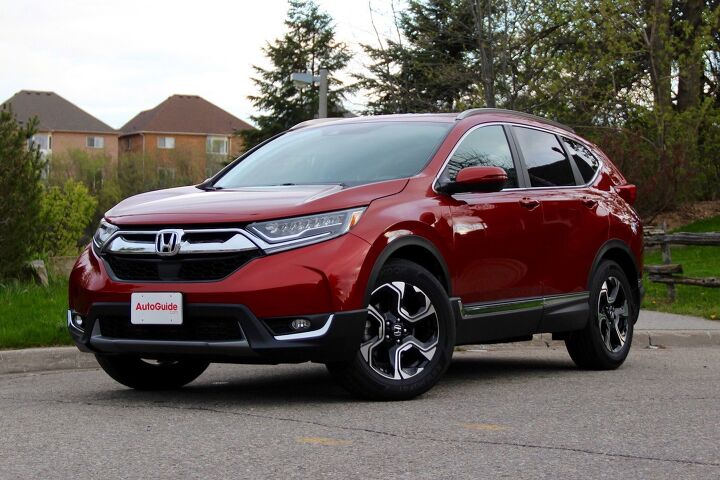


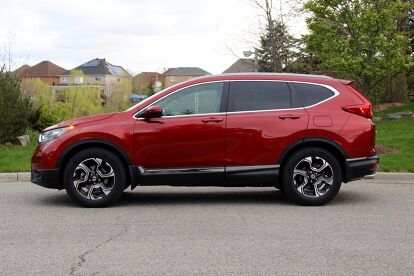





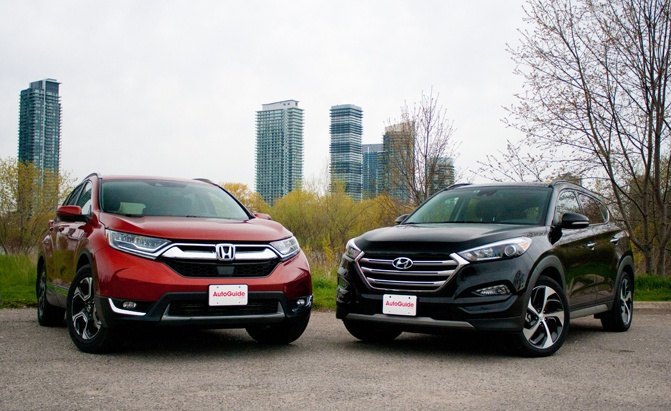














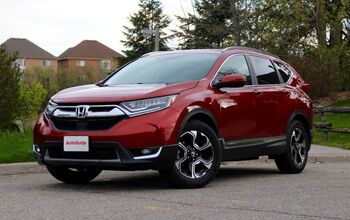




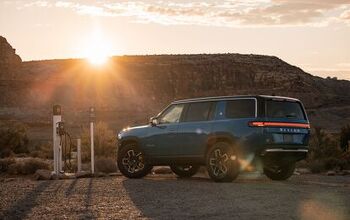
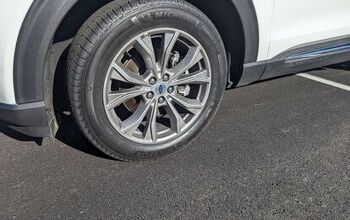
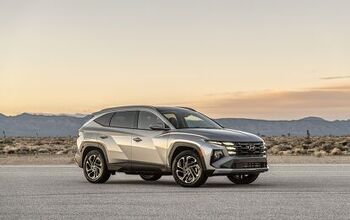
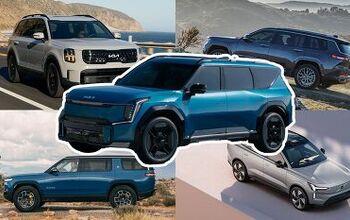


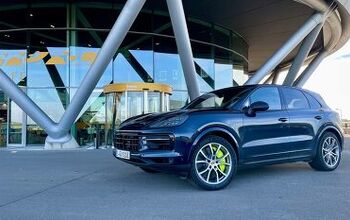
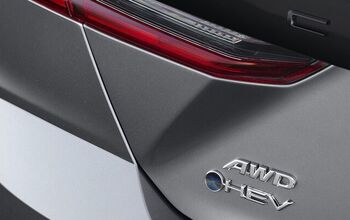

Comments
Join the conversation
Surprised you didn't mention the elephant in the room when it comes to sales race as the Equinox has been matching CR-V sales in 2018. A Equinox 1.5t AWD is $6,000 less than a CR-V 15.t AWD which might explain why the Equinox sls so well even with the similar GMC Terrain stealing some sales.
i would like to know what my car is worth. It has 90000miles on it.